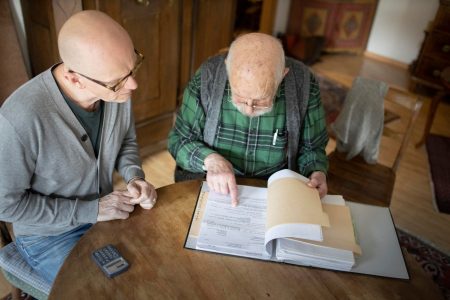Student loan forgiveness just got a bit easier for several categories of borrowers. New regulations that went into effect last month transform several student debt relief programs, expanding access and simplifying the application process.
This is particularly true for the Total and Permanent Disability, or TPD, discharge program. Borrowers who are unable to maintain substantial, gainful employment due to a medical condition can qualify to have their entire federal student loan balance eliminated through the TPD discharge program. The new regulatory changes will make it easier for borrowers to apply for TPD student debt relief, and keep their loans discharged if they are approved.
Here’s what borrowers should know.
Easier To Apply For Student Loan Forgiveness Through TPD Program
The new regulations make a number of changes to the TPD discharge application process that will make it easier for many borrowers to qualify for relief.
Borrowers who receive Social Security disability benefits can now qualify if they have a medical onset date at least five years before applying for student loan forgiveness through the TPD discharge program, regardless of their medical review cycles. Previously, Social Security disability benefits recipients had to have a medical review period of at least five to seven years in order to qualify; that meant that borrowers who had been disabled for many years, but who had regular medical reviews on shorter cycles, could not qualify for TPD relief.
For borrowers not receiving Social Security disability benefits, the new rules also expand the categories of medical professionals who can certify that a borrower meets the TPD standard. Previously, only a doctor could complete the TPD application’s “Physician Certification” form. The new rules, however, will also allow nurse practitioners, physician assistants, and certified independent psychologists to complete the required certification. This will make it easier for borrowers being primarily treated by one of these other medical professionals to qualify.
Automatic Student Loan Forgiveness For Some Social Security Disability Benefits Recipients
The new regulations codify an initiative first implemented under former President Trump, and expanded under President Biden, to provide automatic TPD discharges for certain borrowers who receive government benefits. A data-sharing initiative between the Social Security Administation and the Department of Education allows officials to identify borrowers who qualify for student loan forgiveness, and relief is then provided automatically. That initiative is now codified in the new TPD rules.
“We regularly receive information from the Social Security Administration (SSA) identifying individuals who may qualify for TPD discharge,” says updated Education Department guidance. “If we have received information from the SSA indicating that you are receiving Social Security Disability Insurance (SSDI) or Supplemental Security Income (SSI) benefits and that your next scheduled disability review will be no less than 3 years from the date of your most recent SSA disability determination, we will contact you by letter to notify you that you are eligible for a TPD discharge.”
No More Post-Discharge Income Monitoring For Borrowers Approved For Student Loan Forgiveness Through TPD Program
Under the prior regulatory regime, borrowers who were approved for student loan forgiveness through the TPD discharge program would be subject to three years of income monitoring following the approval. Borrowers who earned income above the federal poverty limit for a family size of two, or who failed to return required forms, could have their loan forgiveness reversed and their discharged debts reinstated.
The new regulations end post-discharge income monitoring for borrowers approved for loan forgiveness through the TPD program. And this applies to borrowers who already had their loans discharged before the new rules went into effect in July.
“Effective July 1, 2023, the U.S. Department of Education (the Department) has implemented changes to the post-discharge monitoring period requirements of the TPD discharge for which you have previously applied,” said the department in a mass email to borrowers who have received TPD discharges within the last three years. “Your annual earnings from employment will no longer be monitored upon TPD discharge approval. You will no longer be required to submit verification of annual earnings from employment each year during the 3-year post-discharge monitoring period.”
Borrowers can still have their loans reinstated during the three-year post-discharge period if they return to school and take out new federal student loans, or if the Social Security Administration determines that the borrower is no longer disabled.
Other Rule Changes For More Student Loan Forgiveness Programs
The rule changes to the TPD discharge program are just one part of a broader effort by the Biden administration to make lasting reforms to student loan forgiveness and debt relief programs. New regulations will also expand access to Public Service Loan Forgiveness (PSLF), a loan forgiveness program for borrowers who work in nonprofit or government jobs. And it will make it easier for borrowers defrauded by their school to qualify for debt relief under the Borrower Defense to Repayment program.
The new regulations also will curtail interest capitalization. And the administration is also rolling out a new income-driven repayment plan that will lower payments and accelerate student loan forgiveness for many borrowers.
Further Student Loan Forgiveness Reading
5 Student Loan Forgiveness Updates As Payments Resume In A Matter Of Weeks
Student Loan Pause Extension? New Proposal Would Eliminate Interest For Current Borrowers
Here’s When The Next Student Loan Forgiveness Notifications Will Go Out
New Changes Expand Student Loan Forgiveness For Public Service Borrowers
Read the full article here








